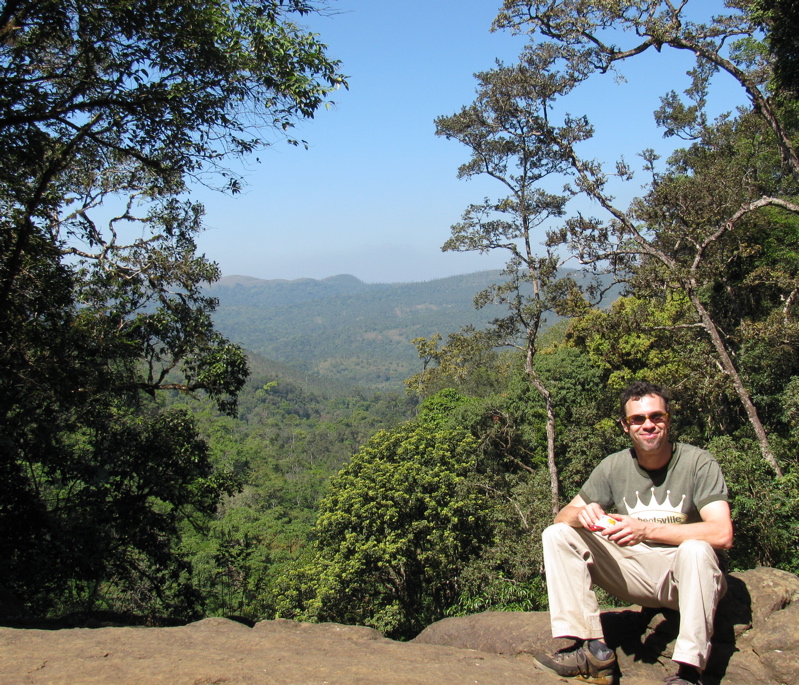Our Faculty
Courses Taught
I am currently on sabbatical at Monash University in Melbourne Australia.
Research Interests
Geometric topology, especially knot theory and hyperbolic 3-manifolds.
Here is a link to a picture of the 'butterfly' of roots of the Farey recursive family of Q-polynomials. These polynomials describe the geometry of the two-bridge links.
I also used to be a sculptor and printmaker. Most of my artwork was designed using random numbers and elementary mathematics.
Publications
- Dehn surgery and hyperbolic knot complements without hidden symmetries (with Jason DeBlois, Neil Hoffman, Christian Millichap, Priyadip Mondal, and William Worden). International Mathematics Research Notices, (Feb. 2022), pp. 1-59.
Neumann and Reid conjecture that there are exactly three knot complements which admit hidden symmetries. This paper establishes several results that provide evidence for the conjecture. It provides technical obstructions to having infinitely many fillings of a cusped manifold produce knot complements admitting hidden symmetries. This is used to show that, for any two-bridge link complement, at most finitely many fillings of one cusp can be covered by knot complements admitting hidden symmetries. The paper also shows that the figure-eight knot complement is the only small volume knot complement with hidden symmetries. It concludes with two independent proofs that, among hyperbolic knot complements, only the figure-eight knot complement can admit hidden symmetries and cover a filling of the two-bridge link complement S3-6^2_2. These proofs illustrate that the technical obstructions established earlier can be made effective.
- Farey Recursive Functions (with Cory Emlen, Kenton Ke, Denise LaFontaine, Kelly McKinnie, and Catherine Rigby). arXiv:2008.13303.
Involve 14 (2021), no. 3, 439-461.This paper was written by my undergraduate research group at UM. It introduces Farey recursive functions and investigates their basic properties. The paper includes several applications of this theory.
- Generic hyperbolic knot complements without hidden symmetries (with Jason DeBlois and Priyadip Mondal). arXiv:1910.04712.
To appear in Communications in Analysis and Geometry.We establish a pair of criteria for proving that most knots obtained by Dehn surgery on a given two-component hyperbolic link lack hidden symmetries. .
- Farey recursion and the character varieties of 2-bridge knots. arXiv:1902.01968.
Contemporary Mathematics v 20 (2020), pp. 9-33.This paper describes the (P)SL(2,C) character varieties of all 2-bridge knots and the diagonal character varieties for all 2-bridge links in terms of a set of polynomials defined using Farey recursion.
- Hidden symmetries via hidden extensions (with Jason DeBlois). arXiv:1501.00726.
Proceedings of the Americal Mathematical Society 145:8 (2017), pp. 3629-3644.This paper introduces a new approach to finding knots and links with hidden symmetries and uses this approach to show that a certain family of hyperbolic links has hidden symmetries.
- Closed surfaces and character varieties. arXiv:1201.2131.
Algebraic and Geometric Topology 13 (2013), pp. 2001-2037.We show that module structures on the coordinate ring of the (P)SL(2,C) character variety for a knot manifold can be used to identify when boundary slopes and closed essential surfaces are detected by the techniques of Culler and Shalen. The paper includes numerous examples.
- Some virtually special hyperbolic 3-manifold groups (with Jason DeBlois and Henry Wilton). arXiv:0903.5288.
Commentarii Mathematici Helvetici 87 (2012), pp. 727-787.We show that hyperbolic 3-manifolds that admit a decomposition into right-angled ideal polyhedra are virtually fibered and LERF. The paper includes numerous examples.
- Algebraic invariants, mutation, and commensurability of link complements (with Jason DeBlois). arXiv:1202.0765.
Pacific Journal of Mathematics 267:2 (2014), pp. 341-398.We construct an infinite family of hyperbolic two-component links and investigate their geometric and commensurability properties. Among other things, we show that mutants of these manifolds produce arbitrarily large finite subfamilies of nonisometric manifolds with the same volume and scissors congruence class. Depending on the choice of mutation, these manifolds may be commensurable or incommensurable.
- Not all boundary slopes are strongly detected by the character variety (with Stephan Tillmann). arXiv:math/0510418.
Communications in Analysis and Geometry 15:4 (2007), pp. 695–723.We answer the question of whether all boundary slopes of a hyperbolic 3-manifold are strongly detected by the character variety by giving an infinite family of hyperbolic links which have boundary slopes that are not strongly detected.
- All roots of unity are detected by the A-polynomial. arXiv:math/0411205.
Algebraic & Geometric Topology 5 (2005), pp. 207-217.We answer a question of Cooper, Culler, Gillet, Long, and Shalen as to which roots of unity can arise when a boundary slope is strongly detected by the character variety. For each positive integer n, we give examples of infinitely many hyperbolic manifolds where every nth root of unity arises.

